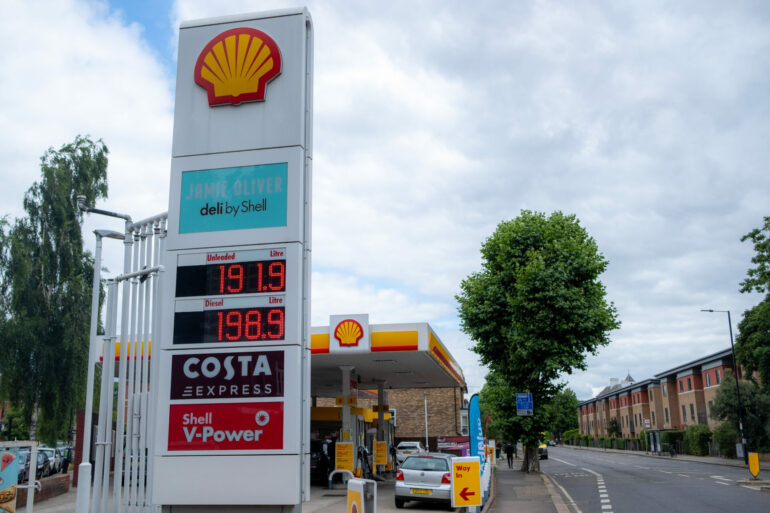The rate of inflation fell to 9.9% in August, down from 10.1% in July, the latest Office for National Statistics (ONS) figures show.
The decline was attributed to a fall in fuel costs. With the Government having announced and energy support package for homes and businesses over the Winter it now looks like inflation could fall further.
However, the Bank of England is widely tipped to raise interest rates again with a 0.50% rise to 2.25% being predicted.
However, the Central Bank is expected to cut its inflation expectations to take account of the energy price guarantee.
Reaction
Simon Webb, managing director of capital markets and finance at LiveMore:
“Rather unexpectedly, CPI inflation fell by 0.2% in August, down to 9.9%. Now that the energy price cap has been reduced by the new government to £2,500 from October, inflation is expected to be dampened to some extent.
“However, this is almost twice as high as this time last year when the energy price cap was set at £1,277, so many people are still experiencing significant increases in their cost of living.
“It is inevitable that the Bank of England will raise base rate next week, the question is by how much? The industry guess work is anywhere between 0.5% and 0.75%. Whatever the increase, let’s hope it’s sufficient to help contain inflation and avoid tipping the base rate environment into territory not seen for 14 years.”
Richard Pike, chief sales and marketing officer:
“Even though we are seeing the cost of fuel coming down on forecourts across the country, everything else is becoming more expensive.
“The Prime Minister’s energy support package will undoubtedly make a difference, but if businesses don’t get the same support, then consumers will be paying higher prices across the board.
“Added to this we hear that, although we now have the lowest unemployment rate in almost 50 years with more jobs available than people to fill them, real wages are not keeping pace with rising costs.
“At the same time employers are already reporting having to increase wages to entice would be employees, this too will be a cost that will have to be passed on to consumers. We expect that the Bank of England will increase interest rates again next week, but it is difficult to see how, at this rate, it can do anything to alleviate increasing inflation.
“So for borrowers this is a time to take stock, as interest rates rise lenders will be forced into increasing mortgage rates.
“We have already seen the average rate pass 4%, which will of course put more pressure on households.
“The figures on arrears from the Bank of England yesterday showed that the value of mortgages in arrears fell in the second quarter, which is something of a false positive. This quarterly data is now months out of date and interest rates and inflation have been increasing since the end of the period.
“With this in mind it is only inevitable that the figures we will see in December for Q3 will show a reversal of this trend.
“For lenders there are sure to be a number of vulnerable borrowers that are already starting to worry and will need to know where they can get the help they need, before things get too late. The onus of responsibility is with lenders now to ensure that vulnerable clients get that help.”
Ross Boyd, founder of the always-on mortgage comparison platform, Dashly.com:
“Soaring energy bills are something the UK’s mortgage lenders have the chance to address head on. Lenders can be part of the solution to this unprecedented crisis and the issue of energy longer term.
“There is currently a significant energy efficiency deficit for 75% of residential properties. Equally, there is significant borrowing capacity available for property owners. We therefore need to start embedding energy-efficiency measures into people’s mortgages where applicable.
“It’s in the interest of both the homeowner who will pay cheaper bills and the lender, as energy-efficient homes will retain value and also mean borrowers are less likely to default due to astronomical energy prices. Now is the time for the mortgage industry to go green in earnest rather than continue along the current path of largely token green products.
“Over time, Government funding could be transitioned away from subsidies, which are currently estimated to be £20bn per year, that offset the cost of energy to providing financial assistance for owners to invest in improving the energy efficiency of properties.
“We are actively working with lenders to deploy new solutions such as decarbonisation loans, where funding would be provided in the form of subordinated home equity loans. These could be in the form of either Further Advances or Home Equity Lines Of Credit that the borrower repays.
“The HELOC would behave more like an offset account in the way the funds are accessed. HELOCs could be underwritten and issued in the form of a charge card linked to an (offset) account that can only be used with accredited providers for retrofit works.
“The loan would be issued to the property owner and serviced through the current network of mortgage lenders. Either way, the facility could be low or no interest depending on the source of funds and borrower’s affordability / means.
“As the loan would be secured against the property, it would be repaid on a subsequent sale of the property or could even be passed onto the new owners. Winter is coming and mortgage lenders have an opportunity to do something for the greater good of borrowers, but they need to act fast, ideally in tandem with the Government.”



